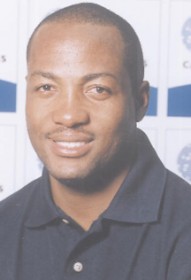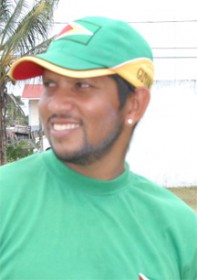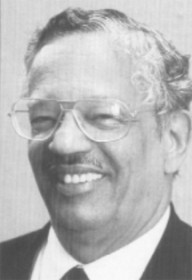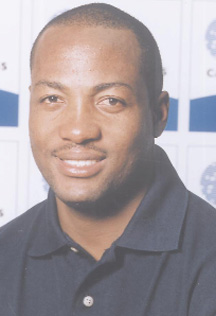– The West Indies Cricket Board is once again getting tough about physical fitness in much the same way as the Pat Rousseau administration did several years ago. The question is will they continue with the policy or will it like Rousseau’s did, flop after a few months, asks Tony Cozier
It has taken 12 years but the West Indies Cricket Board (WICB) is once more talking as tough about fitness – indeed, even more so – as then president Pat Rousseau did following its annual general meeting in May, 1998.

The WICB used unusually frank language last week to explain the decision to omit Ramnaresh Sarwan (at 30, a veteran of 83 Tests, a former captain and a quality batsman with 15 Test hundreds and an average of 41) and Narsingh Deonarine (a gifted, but significantly less established player) from those offered central retainer contracts for the coming year.
After dealing individually with Sarwan, Deonarine and fast bowler Jerome Taylor, another removed from the previous list, the WICB declared that in “the ongoing development of a new team ethos…a commitment to achieving and maintaining a high level of physical and medical fitness…will be closely supervised and rigidly enforced.”
If not word for word, the gist was unmistakably the same as Rousseau’s.
“If you get selected to a team and we send you to the person who does the testing and you fail, with no time to get ready, you’ll be put out of the side and a replacement will be found,” Rousseau said back then.
“These are professionals and, if they can’t get themselves physically fit, then they can’t fulfill their contracts,” he redundantly added.
To turn Rousseau’s plan into action, the WICB brought in Dr. Sam Headley, a former Barbados youth team captain who had moved from playing to become an associate professor in exercise physiology at Springfield College in the U.S., to set up medical, physical and optical testing for those chosen for West Indies teams, from under-15 level up.
It seemed a forthright notice to players to shape up or ship out. As with so much else with the WICB, it came to nothing.
Within a few months, on the ill-fated 1998-99 tour of South Africa, senior players complained that the regime of long-time trainer Denis Waight was too taxing and leading to a spate of injuries.
Waight consequently trim-med down a programme that had been credited with the high levels of fitness of the formidable teams under Clive Lloyd and Viv Richards.
Even though Rousseau reiterated that Dr. Headley’s course would be continued, and reinforced, after the South African tour, it patently wasn’t.
Since then, a succession of coaches and trainers have identified lack of condition as one of the prime reasons for the persistent breakdowns and the dire performances on the field.
The West Indies used 15 players in the three Tests in Australia last November and December when Taylor, Sarwan, Shivnarine Chanderpaul and Adrian Barath all missed matches through injury.
In the three Tests against South Africa in June, Kemar Roach, Nelon Pascal and Ravi Rampaul all missed a match; Sarwan and Barath were out for the entire series.
At the height of their powers in 1984/85, with Waight in charge of training, the West Indies made only two changes in five Tests in England and only one in five, Australia. Quite apart from their dominant batting and devastating bowling, they reached fielding standards unmatched at the time.
The closest they have since come to such excellence followed the intensive six-week camp that prepared them for the Stanford Super Series US$20 million match against England two years ago. Sarwan was prominent among those transformed by the training.

It is ironic that his removal from the contracted players list should come so soon after his standout year in 2009 when he averaged 60.71 in seven Tests (five against England, two against Australia), 10 runs an innings above his previous best in 2004.
Judging from the WICB’s comments, it appears complacency might have set in.
It said that Sarwan was one of three players “formally” written to on “their consistently low levels of fitness” but that his (and Deonarine’s) remained “below par despite the official notice”. The upshot was that injuries of one kind or another restricted him to two of the six Tests and 13 of the 25 limited-overs internationals in the September 30-October 1 contract period.
As he should be, Sarwan has clearly been shaken by the setback – quite apart from the US$80,000 it will cost him.
He is “disappointed” that he seems to be “the one most times singled out for special attention by the board” and that he gets “the impression that some people believe that I deliberately get injured and that could be more frustrating than the injury”.
While he must wonder why others clearly below the fitness levels required at the highest level have had their contracts renewed, it is not the first time he has been ticked off for his approach.
On the morning of the second Test in Pakistan in November 2006 he was dropped and told by Captain Brian Lara “to reflect and come back strong”.
The WICB’s message is the same this time.

Sarwan’s response to this latest setback is heartening: “I continue to be fully committed to representing the West Indies and at this point I am fitter than I was a year ago.”
He is too valuable a cricketer for the West Indies to be able to do without him.
At 30, he should be at his peak, holding down the No.3 spot and churning out runs as he did in the Caribbean against England a year and a half ago.
Judging by the longevity of the remarkable Chanderpaul, his fellow Guyanese whose appetite for the game is as keen as ever at 36, he has many more years left at the top.
But he must know, as every professional sportsman knows, that he cannot realise his full potential – the potential of a Test average of 50 that Ted Dexter predicted when he first saw him on debut, aged 19 – if he isn’t physically ready.
And he’s not the only West Indian who needs to appreciate that undeniable certainty.

